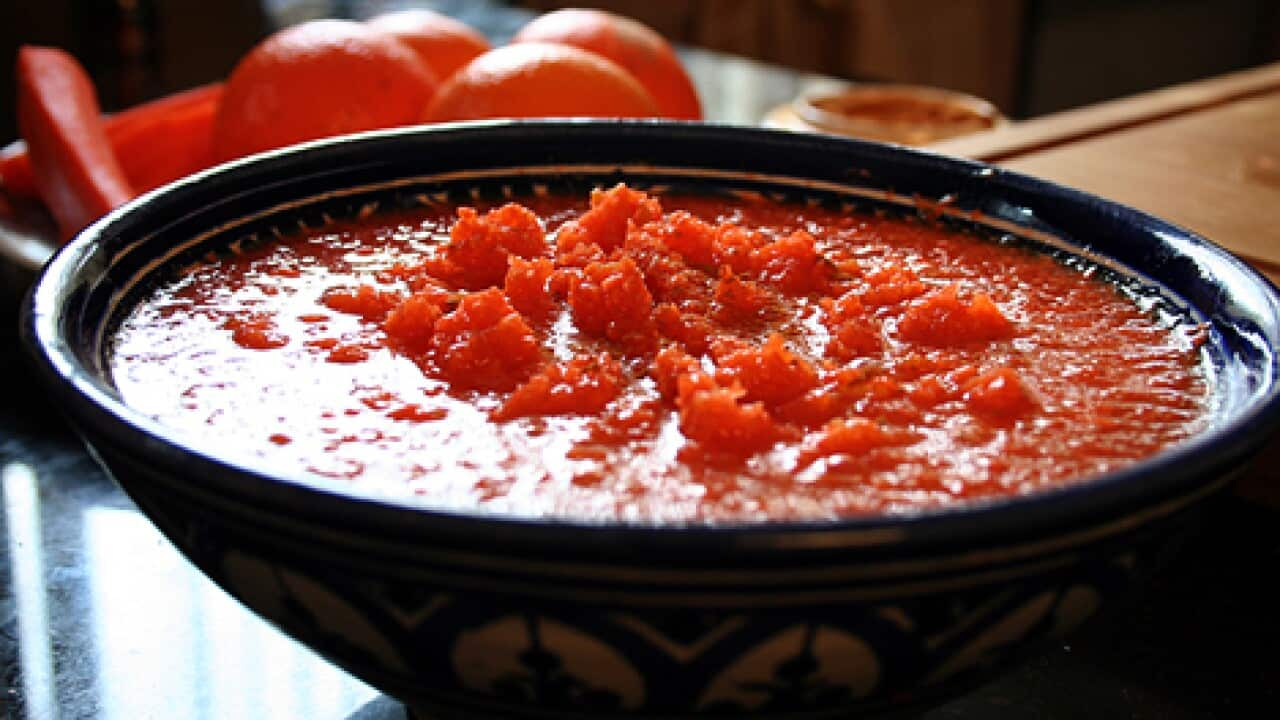High blood pressure is called the silent killer. That’s because it has . Having high blood pressure (hypertension) increases your risk of heart disease, stroke, heart failure and kidney disease.
Six million Australian adults (34 per cent) have high blood pressure – 140/90 millimetres of mercury (mmHg) or more – or take medications for it. Of those, .
There is some good news. High blood pressure can be treated or prevented. Eating oats, fruit and vegetables – and beetroot, in particular – helps. So does avoiding salt, liquorice, caffeine and alcohol.
Optimal blood pressure is over 80 mmHg or less. Lowering it by 1-2 mmHg can have a big impact on reducing your risk of heart disease and stroke, and the nation’s health care costs.
What to eat to lower your blood pressure
Rolled oats
A tested the impact of oats on systolic blood pressure (the first blood pressure number, which is the pressure at which the heart pumps blood) and diastolic blood pressure (the second number, which is when the heart relaxes) in about 400 healthy adults.
The researchers found that systolic blood pressure was 2.7 mmHg lower and diastolic blood pressure was 1.5 mmHg lower when participants ate around 60 grams of rolled oats (a packed half-cup raw oats) or 25 grams of oat bran per day.
For each extra one gram of total daily fibre, there was an extra 0.11 mmHg reduction in diastolic blood pressure.
While some of fibre’s effect is due to weight loss, soluble fibres produce bioactive products when they’re fermented in the large bowel. These work directly to lower blood pressure.
To improve your blood pressure, eat rolled oats or oat bran for breakfast, add to meat patties, or mix with breadcrumbs in recipes that call for crumbing.
Beetroot
Beetroot is extremely rich in a compound called inorganic nitrate. During digestion, this gets converted into nitric oxide, which causes arteries to dilate. This directly lowers the pressure in them.
A of mostly healthy young men found drinking beetroot juice was associated with a 4.4 mmHg reduction in systolic blood pressure. But it found no change in diastolic blood pressure.
However a recent who already had high blood pressure found beetroot juice reduced systolic and diastolic blood pressure.
The men were randomly assigned to drink 250 ml (one cup) of beetroot juice daily for four weeks or a non-active placebo.
Blood pressure in the men who drank the beetroot juice reduced over 24 hours, with systolic blood pressure 7.7 mmHg lower and diastolic blood pressure 5.2 mmHg lower.
Try wrapping whole fresh beetroot in foil and baking in the oven until soft, or grate beetroot and stir-fry with red onion and curry paste and eat as a relish This beetroot curry is a great way to get beets to your table. Find the recipe .
This beetroot curry is a great way to get beets to your table. Find the recipe .

Source: SBS Food
Vitamin C
Vitamin C, or , is found in fresh vegetables and fruit. An average serve contains 10-40mg of vitamin C.
In a review of 29 short-term , people were given 500 mg of vitamin C per day for about eight weeks.
Blood pressure significantly improved, with an average reduction in systolic blood pressure of 3.84 mmHg and 1.48 mmHg for diastolic blood pressure.
When only those with existing high blood pressure were considered, the drop in systolic blood pressure was 4.85 mmHg.
However, those need to be cautious about taking vitamin C supplements. Excess vitamin C is excreted via the kidneys and can contribute to the formation of kidney stones.
One advantage of getting more vitamin C from eating more vegetables and fruit is that you boost your potassium intake, which helps from salt.
vitamin hit

Carrot and orange salad
What to avoid to lower your blood pressure
Salt
Adults (one-quarter to a half teaspoon), which is equivalent to 460 to 920mg of sodium.
But in Australia seven out of ten men and three in ten women eat way more than that – and much more than the upper recommended limit of 5.9 grams of salt (about one teaspoon) or .
If you add salt to food yourself this pushes your sodium intake even higher.
A involving 3230 people showed that reducing salt intakes by 4.4 grams a day could reduce systolic blood pressure by about 4.2 mmHg and diastolic by 2.1 mmHg.
In those who had high blood pressure there were even bigger reductions of 5.4 mmHg (systolic) and 2.8 mmHg (diastolic).
Avoid foods high in sodium. Don’t add salt and try to choose lower-salt versions of processed foods.
safe levels?

How much salt is okay to eat?
Alcohol
Consuming one or more alcoholic drink a day is that is about 2.7 mmHg and diastolic blood pressure 1.4 mmHg higher than non-drinkers.
Interestingly, when you first drink an alcoholic beverage, blood pressure goes down, only to rise later.
A rise in blood pressure after drinking alcohol is , rather during sleep.
The bad news is that larger amounts of alcohol increase your risk of high blood pressure, , but also to a lesser extent .
Licorice
Most licorice candy sold currently contains very little true licorice root and therefore, little (GZA), the active ingredient.
Occasionally, licorice candy does contain GZA in large amounts. , which contributes to high blood pressure. So check licorice food labels. Take care if it contains licorice root.
Caffeine
Caffeine is most commonly consumed in coffee, tea, cola and energy drinks.
High intakes of caffeine from coffee in the short term. In a , people given one to two cups of strong coffee had an increase in their systolic blood pressure of 8.1 mmHg and 5.7 mmHg for diastolic blood pressure, up to about three hours after drinking it.
But three studies that lasted two weeks found drinking coffee did not increase blood pressure compared with decaffeinated coffee or avoiding caffeine. So you need to monitor your individual response to caffeine.





